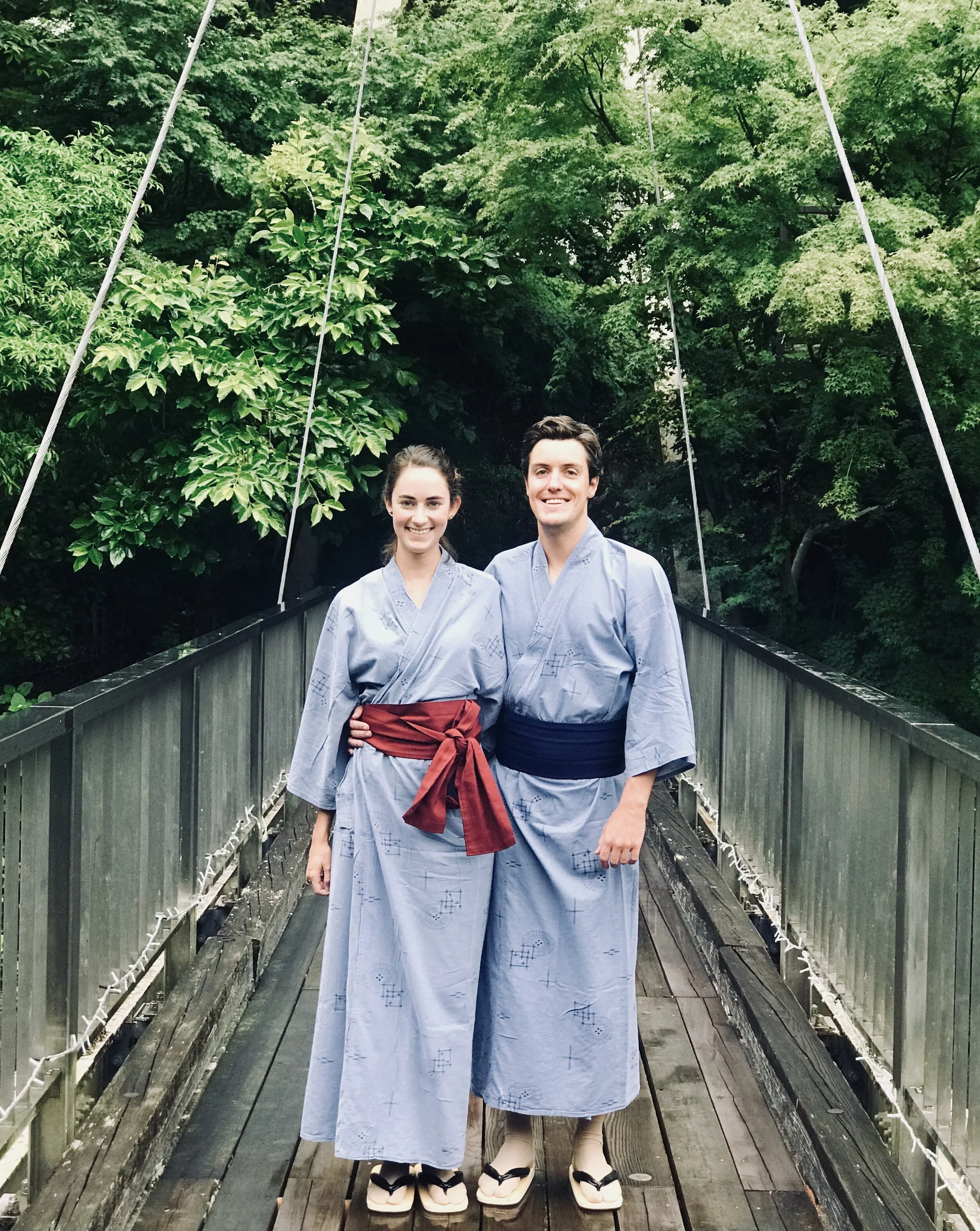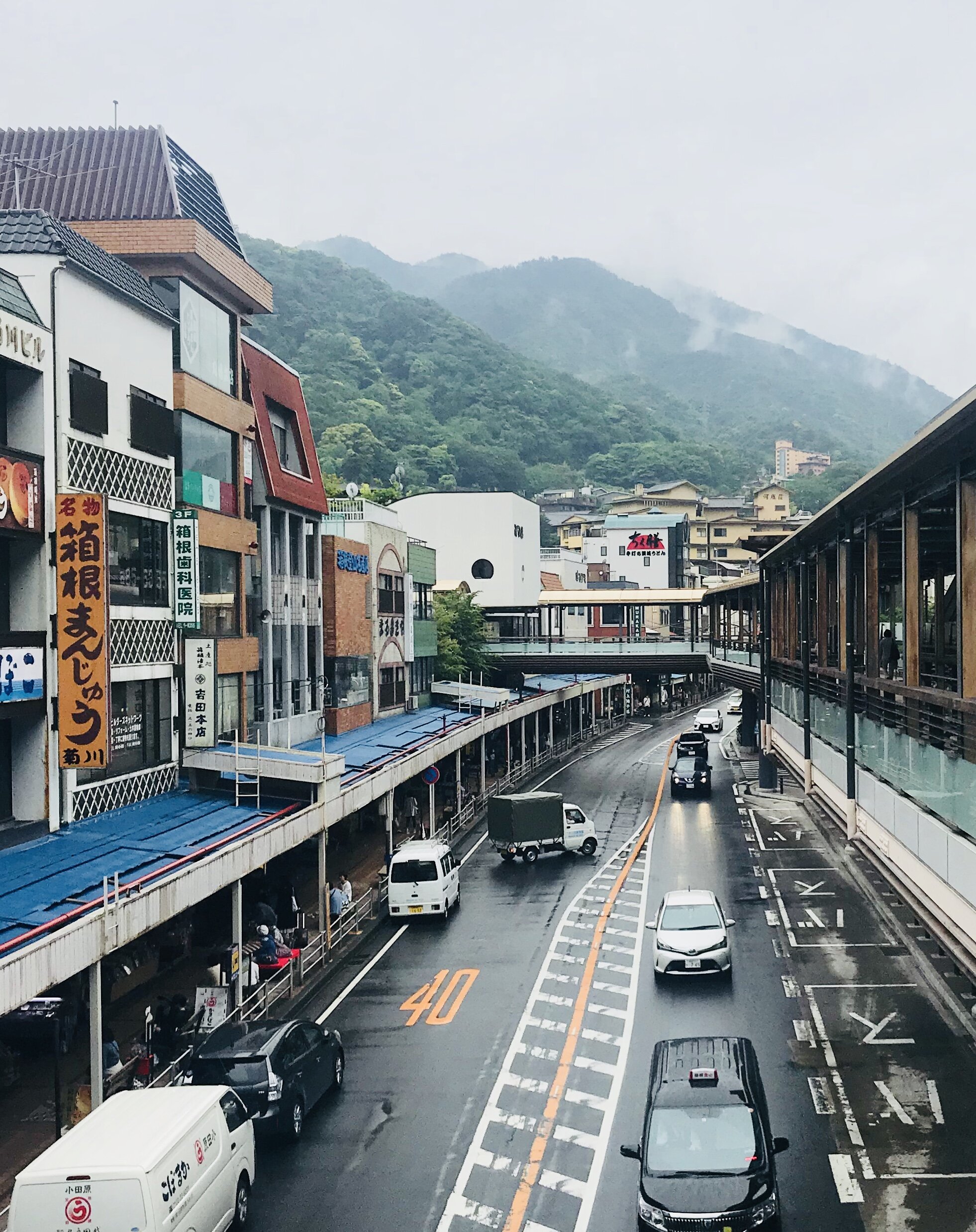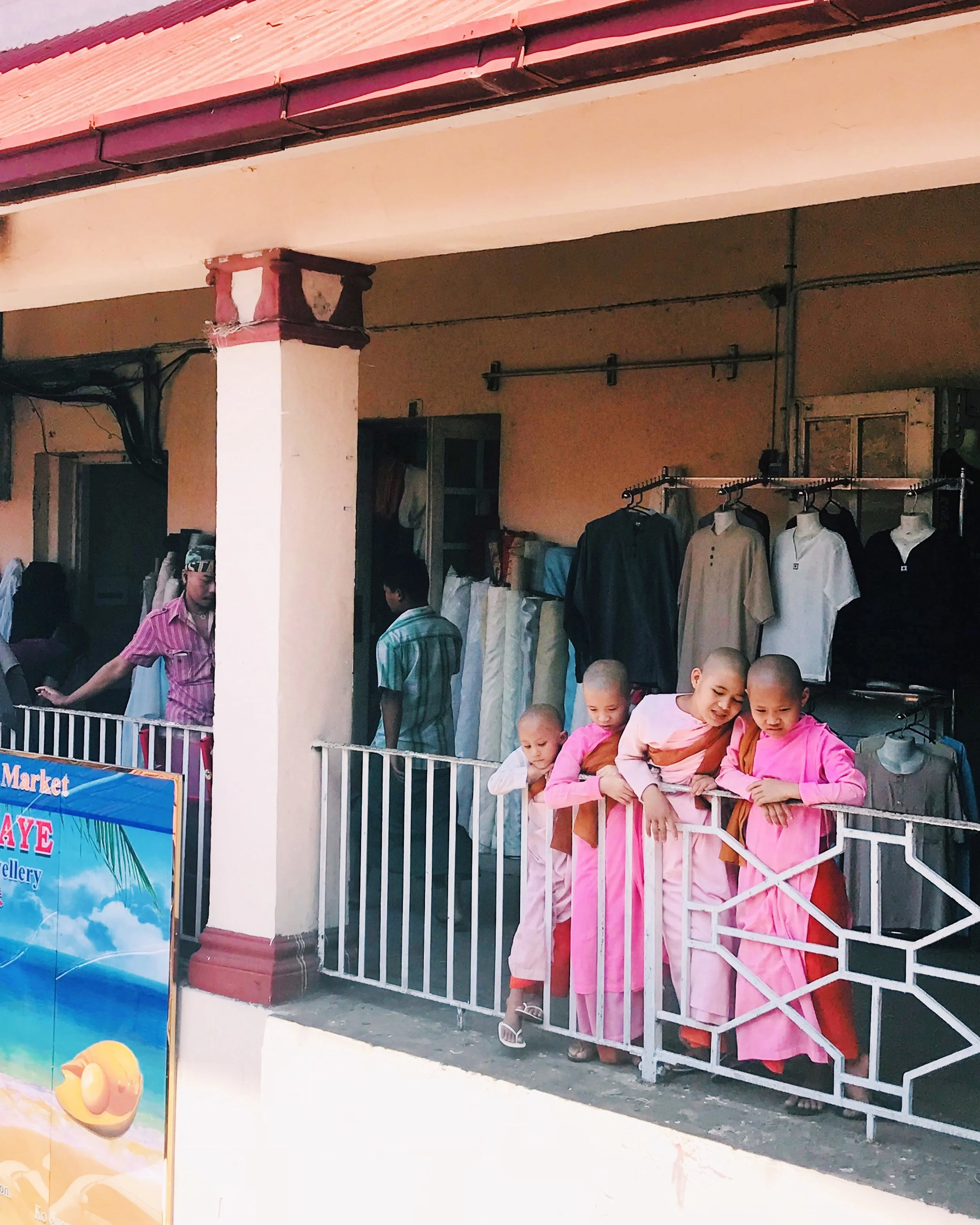Japanese Ryokan + Onsen FAQs: 9 Things to Know Before You Go
As we sit at home in chilly Colorado preparing for the holidays, it seems like a better time than ever to reminisce on Japanese hot springs (which we wish we were currently soaking in).
During our 2 weeks in Japan, we visited the beautiful town of Hakone specifically for the onsen hot spring experience. There, we stayed in a ryokan — or traditional Japanese inn — with two of our favorite travel buddies.
The ryokan with onsen hot spring is a uniquely Japanese experience that we highly recommend. Below, our top 9 things to know before you go.
1. What makes a ryokan different from any other hotel?
A ryokan is totally different from a Western style hotel, and a ryokan stay is characterised by a few traditional features:
Minimalistic tatami mat room and Japanese futon bedding - A standard ryokan room will contain very little furniture — usually just a low table for dining and some traditional zaisu (chairs without legs). When it’s time for bed, the staff will lay out your futon mattresses and bedding on the floor. While very different from the Western definition of “futon,” these beds are surprisingly soft and comfortable making for a solid night’s sleep.
Emphasis on nature - Ryokans are usually located in the heart of beautiful natural surroundings, with a focus on peace, relaxation, and respite from the fast pace of your normal day-to-day. You’ll often find grounds that feature gorgeous gardens, walking paths, and spectacular views of the surrounding scenery.
A beautiful stroll through the grounds shortly after we arrived at our ryokan.
Yukata (Japanese-style robes) and slippers - One of the first things you’ll do after checking in to your ryokan is to change into socks, slippers, and robes. You’ll wear these comfy outfits for the duration of your stay! We certainly had fun rocking them.
Flip flops with socks…awkward at first but eventually oddly comfortable.
Multi-course kaiseki dinner and traditional Japanese breakfast - One of the most special parts of a ryokan stay, in our opinion! Kaiseki is a traditional multi-course Japanese dinner drawing inspiration from imperial courts, samurai culture, tea ceremony customs, and other dining traditions throughout Japanese history. Dinner will typically include an appetizer, sashimi, a simmered dish, a grilled dish and a steamed course, in addition to other regional and seasonal specialties — all precisely and artfully presented. Breakfast will usually incorporate a selection of Japanese dishes from fish, rice, and miso soup to egg, toast, and tea or coffee. Our meals were served in our own room, while some take place in a common dining room.
Overwhelmed by our stunning breakfast spread.
2. How much does it cost to stay at a ryokan?
Ryokan stays can be viewed as a fully immersive cultural experience, especially if you’re staying at one with its own onsen. For that reason, they’re typically more of a specialty vs. a budget lodging option. While extremes exist, the average per person / per night cost of a ryokan stay at the time of this post is 15,000 yen ($137 USD) to 25,000 yen ($228 USD). The four of us stayed at Hakone Shiunso in a standard Japanese-style river room and paid $180 per person for one night. Definitely on the pricier end vs. our other accommodations on the trip, but we found it 100% worth it for the memorable experience.
3. Where’s the best place to experience Japanese onsens?
Located just two hours from Tokyo by train, Hakone is known for its lush mountainous scenery, and is one of the most popular onsen locations in Japan. For us, Hakone made the perfect one-night stop on the way from Tokyo to Kyoto to get the ryokan + onsen experience.
Should you find yourself in other parts of Japan, traditional hot springs can be found all across the country. Some of the other most famous places to experience Japanese onsens include Lake Kawaguchi (not far from Hakone, you can lounge in hot spring baths while enjoying jaw-dropping views of Mt. Fuji), Kinosaki (one of the most legendary “onsen towns” of Japan), Shibu onsen in Yamanouchi (bathe side by side with snow monkeys), and many more.
Ryokans are traditional Japanese inns, and this experience can be found almost anywhere throughout the country — though the combination of a ryokan that has its own onsen bath is simply unbeatable.
Charming Hakone on a misty day.
4. Can I wear a swimsuit at an onsen?
For the most part, tradition dictates that you fully disrobe to enter an onsen bath. While you’d stand out like a sore thumb at a public onsen in a swimsuit, we went to a private onsen that belonged only to the ryokan we were staying at. The staff would never have known whether we entered in swimsuits. In keeping with tradition though, we went into the baths dressed in only our bday suits...which was a new step in our friendships for sure. We only ever saw one other person at the onsen at the same time we were.
5. Are all onsens gender-segregated?
For the above reason, yes, usually. Some onsens do have a joint bath where swimsuits are worn that can be enjoyed by all genders.
6. Is it true that you can’t go to an onsen if you have tattoos?
Traditionally, tattoos in Japan were associated with the Yakuza (a Japanese gang and international crime syndicate) and those with ink were banned from entering onsens. This rule still stands in some onsens today. When attending public onsens, visitors often cover up small tattoos with bandages to avoid disrespecting tradition or being forced to leave. As mentioned above, we visited a private onsen at our resort. Three out of four of us had tattoos, and the staff would never have known. Since we’re curious travelers, we asked about it and they said “yes, small tattoos are okay” — which we’re pretty sure they would have said for any size tattoo. Even if one of us had had a traditional full-back Yakuza dragon tattoo, they never would have seen it. So, to sum up the rules on onsens and ink, it really depends whether you’re attending a public or a private bath.
7. How hot are onsens?
While hot spring temperatures vary widely, imagine a typical hot tub temperature of 100-104 degrees Fahrenheit. Make sure to hydrate well before, during and after your onsen soak, and get out if you start feeling dehydrated or light-headed.
8. Is talking allowed at onsens?
Yes! Many people visit onsens with others and chat quietly while enjoying the therapeutic properties of the hot springs. Onsens are meant to be a relaxing experience, however, so any loud noises or rowdiness will not be tolerated well by staff or fellow patrons.
9. What are the health benefits of onsens?
Hot springs have been widely accepted as natural remedies to boost blood circulation, heal skin issues, relieve joint pain, reduce stress, promote sleep, and more.
So, there you have it! Should you find yourself in Japan, we find the ryokan + onsen experience to be one of the most culturally-rich and relaxing experiences you can take part in, and we’d recommend it to anyone traveling with a significant other, friend, or small group.
Other ryokan + onsen questions or insights of your own? Leave a comment below or on our latest IG post!
Happy travels!











